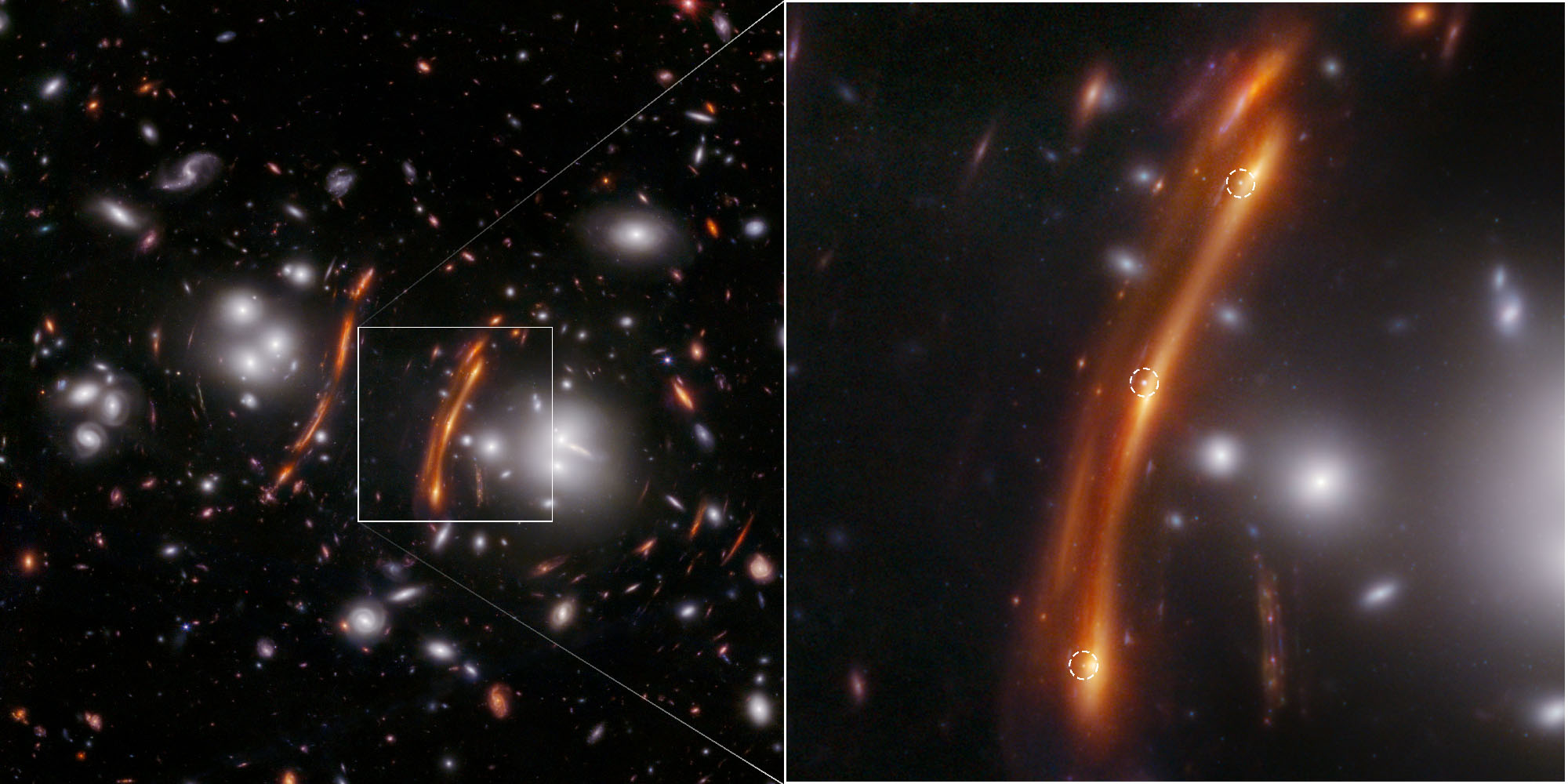The James Webb Space Telescope (JWST) has made an important contribution to clarifying the expansion rate of the Universe. The gravitational lens image, which tripled the image of a distant supernova, helped it achieve this.

Since the Big Bang, our Universe has been continuously expanding. This process is described by Hubble’s Law, the key component of which is the Hubble constant, a coefficient that makes it possible to relate the distance to an object in the Universe to its velocity.
Astronomers are constantly trying to clarify the value of the Hubble constant. They do this by measuring the distance to different objects. JWST is also involved in this work. Astronomers use it to confirm previous measurements made by the Hubble telescope. JWST recently made a discovery that provided an important contribution to this process.
The whole thing started with a study of JWST’s images of the galaxy cluster PLCK G165.7+67.0. A team of American astronomers noticed three dots that were not visible in photos of the same area taken by the Hubble telescope in 2015.
The analysis showed that the dots correspond to Type Ia supernovae. They are formed as a result of white dwarf explosions and have the same maximum luminosity. Therefore, astronomers actively use them as standard candles for determining distances.
But the most interesting part is that all three supernovae photographed by JWST are the same object. The gravity of the galactic cluster bent the light of the explosion, amplifying it and creating three separate images. The situation is unique because gravitational lensing showed the supernova at three different points in time.
This gave scientists the ability to measure time delays between images and analyze lensing properties to calculate the value of the Hubble constant. The obtained value was 75.4 km/s per megaparsec. This is consistent with other measurements of the Hubble constant for our local Universe.
Recall that the value of the Hubble constant for the local Universe differs from the results of calculating the expansion rate of the Universe from the observation of the relic cosmic microwave background. According to them, it is 68 km/s per megaparsec. The reason for this discrepancy remains one of the main mysteries of modern cosmology.
According to NASA


